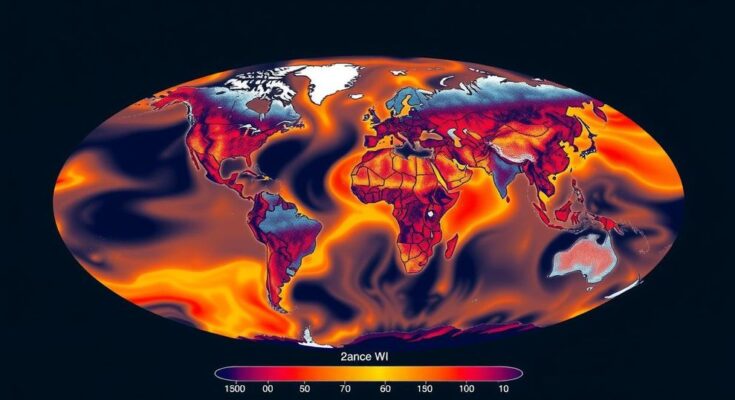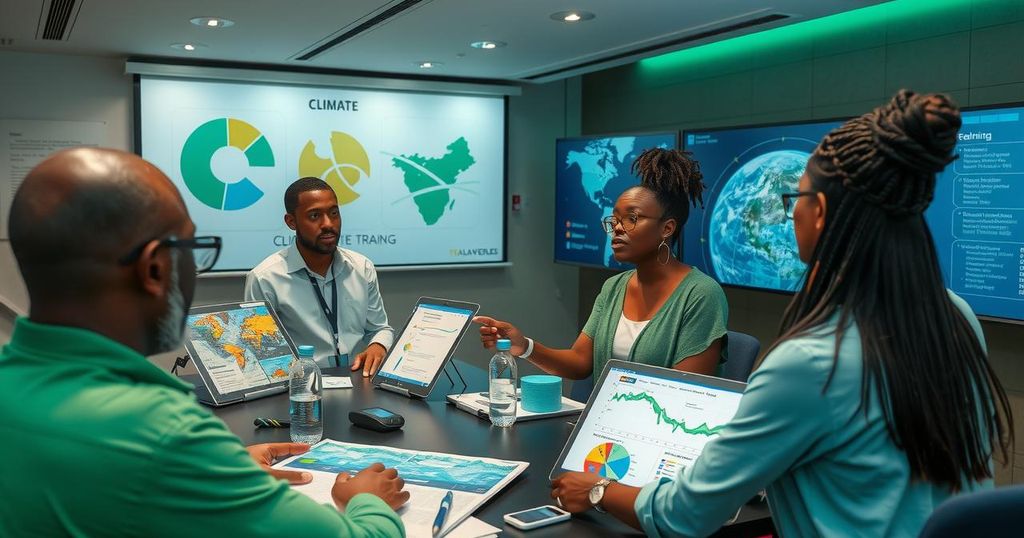The UN Emissions Gap Report warns that global temperatures could surge by 3.1°C by 2100 if greenhouse gas emissions are not curtailed. Countries must intensify their commitments to reduce emissions by 42% by 2030 and 57% by 2035 to preserve the 1.5°C goal established in the Paris Agreement. The report highlights the essential role of technology in achieving these reductions but stresses the necessity for international collaboration. Without adequate action, nations face severe climate repercussions.
The latest United Nations Emissions Gap Report states that if current greenhouse gas emission trends continue, the global average temperature could increase by 3.1°C by the year 2100. This alarming forecast is a stark reminder of the urgent need for nations to enhance their efforts to reduce greenhouse gas emissions significantly. Despite the agreement made in Paris in 2015 to limit the temperature rise to 1.5°C, many countries have fallen short of necessary commitments, prioritizing military and fossil fuel development instead. The consequences of climate change are already visible, as evidenced by rising sea levels affecting regions like the Florida Keys and increasingly severe weather events around the globe. The report emphasizes that declining emissions by 42% by 2030 and 57% by 2035 is critical to maintaining the possibility of achieving the 1.5°C objective. The UN Secretary-General António Guterres has expressed concern over the current emissions gap and highlighted the connection between rising emissions and intensified climate disturbances. He called for immediate and extensive global mobilization to enact concrete actions towards this goal. The forthcoming COP29 conference is seen as a crucial opportunity for countries to present updated climate action plans. Furthermore, the UN report suggests that the potential for reducing emissions through advancements in technology exists, with strategies such as increased reliance on renewable energy sources playing a pivotal role in realization. However, achieving these targets will necessitate unprecedented cooperation among nations, as past efforts have notably failed to produce substantial changes. Thus, the report serves as both a warning and a call to action, urging countries worldwide to unify in their response to the pressing climate crisis.
The UN’s Emissions Gap Report articulates the dangerous trajectory of global temperature rise due to insufficient actions against greenhouse gas emissions, which are currently at an all-time high. The report highlights that to meet the agreements set forth in the Paris Agreement aimed to limit temperature increases to 1.5°C, nations must significantly enhance their commitments and cut emissions. The report also outlines how current trends could lead to a temperature rise of 3.1°C, which presents dire implications for global biodiversity and human livelihoods.
In conclusion, the UN Emissions Gap Report paints a concerning picture of our planet’s trajectory toward rising temperatures without robust and immediate action to curb greenhouse gas emissions. To avoid catastrophic climate change, concerted international efforts are imperative. By aiming for substantial emissions reductions and leveraging existing technologies, there is still a possibility to combat impending climate threats. The upcoming COP29 conference presents a critical platform for enhancing national plans and fostering global cooperation in the fight against climate change.
Original Source: cleantechnica.com




